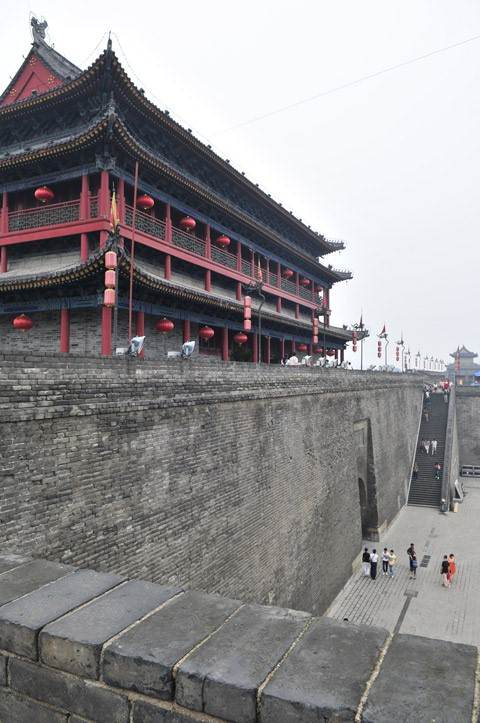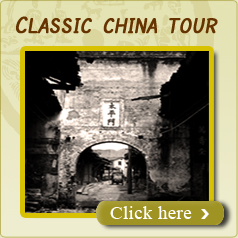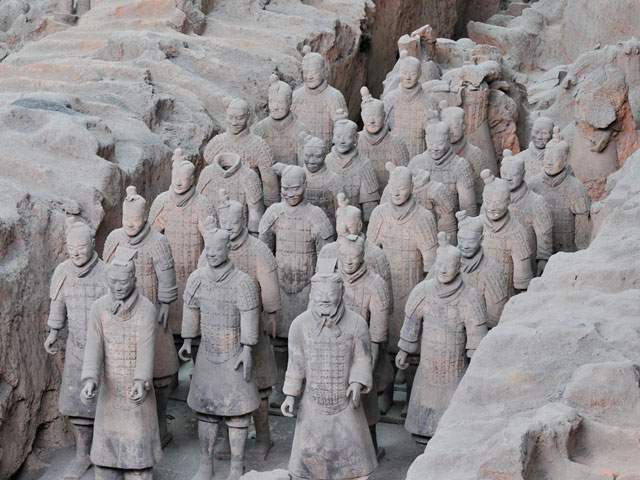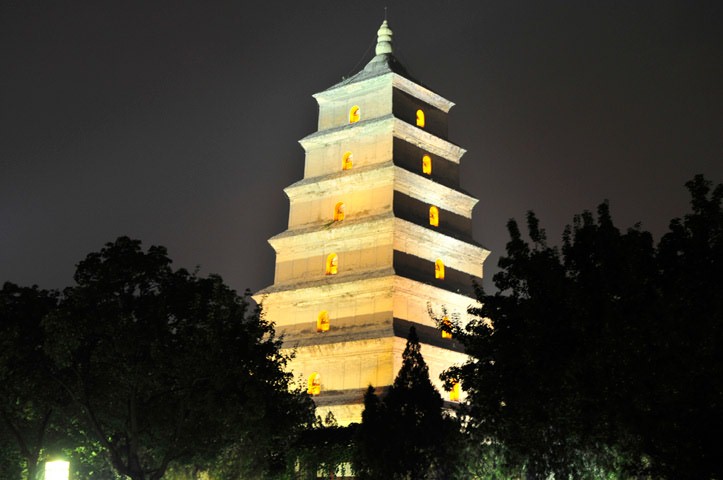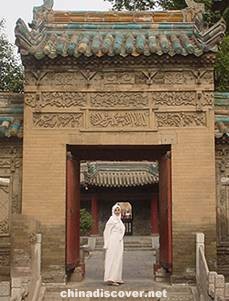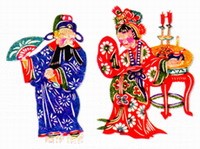Big Wild Goose Pagoda
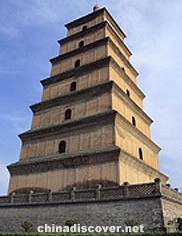
Overview
Situated at south of the City Walls is the brick Big Wild Goose Pagoda in the Temple of Great Maternal Grace complex. The Temple was built in AD 648 by Tang emperor Gaozong as an act of filial piety to honor hsi mother. It was destroyed after the fall of the Tang dynasty and the present buildings, mainly from the Qing dynasty, have been recently renovated.
The Big Wild Goose Pagoda is regarded by many as a symbol of the city. It has a 5m-high square base and reaches 64.5m in height. It was built to house and protect Buddhist scriptures collected by Chinese monk, Xuan Zang, who spent an epic 17 years traveling to India and back for their collection and an equal mount of time doing translating them. His journey has been immortalized in the novel Journey to the West, one of China's most important literary works.
Know more
Originally built in 589 A.D. in the Sui Dynasty, the temple was named Wu Lou Si Temple. It was not until 648 A.D. when Emperor Li Zhi, then still a crown prince, sponsored a repair project on the temple. This was a symbol of thanksgiving to his mother for her kindness, after she had suffered an early death. The temple then assumed the present name Temple of Thanksgiving. The Emperor Gaozong was said to pay homage to the temple twice a day by looking in its direction from the Hanyuan Palace. The temple, with 13 separate courtyards, contained 1,879 magnificent-looking rooms altogether and was a place of grand extent in the Tang Dynasty. However, it went into gradual decay after the downfall of the Tang Dynasty. The halls and rooms that have survived the age are structures that were built in the Ming Dynasty.
The Tang Regime gave orders to build a chamber for the translation of Buddhist scriptures in an effort to have the then widely renowned Master Xuanzang (Monk Tripitaka) agree to be the head of the temple.
The Wild Goose Pagoda was finished in 652 A.D. Its five storeys are 60 meters in height. The decay of the earth-cored pagoda caused the new construction of a 10-storey pagoda from 701 to 704. However, the winds of war, in the years to come, reduced the pagoda almost to ruins, which in turn resulted in the construction of a 7-storeyed, 64-meter-high structure today.
The storyed pagoda was an architectural marvel. It was built with layers of bricks but without any cement in between. The bracket style in traditional Chinese architecture was also used in the construction of the pagoda. The seams between each layer of bricks and the " prisms' on each side of the pagoda are clearly visible. The grand body of the pagoda with its solemn appearance, simple style and high structure, is indeed a good example of ancient people's wisdom and talent.
Must see
Pictures of the Heavenly King and of Buddha are on the door frame sand horizontal bars on four sides of the pagoda's base. These stone sculptures display peak workmanship, and show vivid shapes and smooth lines. They now serve as an important source of material for the study of painting and sculpture of the Tang Dynasty. Out of these artistic works, the one on the horizontal bar of the west door is the most precious. It is a rare piece of art, now used for the study of the Tang architecture.
Inside the temple where the pagoda is situated, there are two small buildings: the one on the east side houses a bell, and the one on the west side a drum. The bell, an iron cast from the Ming Dynasty, weights 15 tons. Together with the drum, the bell was used to strike time for the monks in the temple.
Inside the Great Hall of the Buddha in the temple there are three incarnations of Sakyamuni. The one in the middle is called Dharmakaya. The one on the west side is called Bao Shen Buddha, and the one on the opposite side is called Ying Shen Buddha.
In the Doctrine Chamber stands the Amitabha Buddha. On the wall at the east side of the chamber, there are three rubbings. The one in the middle is called Xuanzang (Monk Tripitaka) carries the Scriptures to Chang'an.
In the Tang Dynasty, every successful candidate who passed the imperial examinations would have to climb up the Big Wild Goose Pagoda and wrote poems and inscriptions there. This ritual would symbolize a soaring career in the future. The fashion of writing poems and leaving inscriptions on the horizontal bars over different doors and stone frame-works by the successful candidates of the imperial examinations went on as far as the Ming Dynasty. These poem sand inscriptions have survived till this day as a fine mirror to the city's past.
